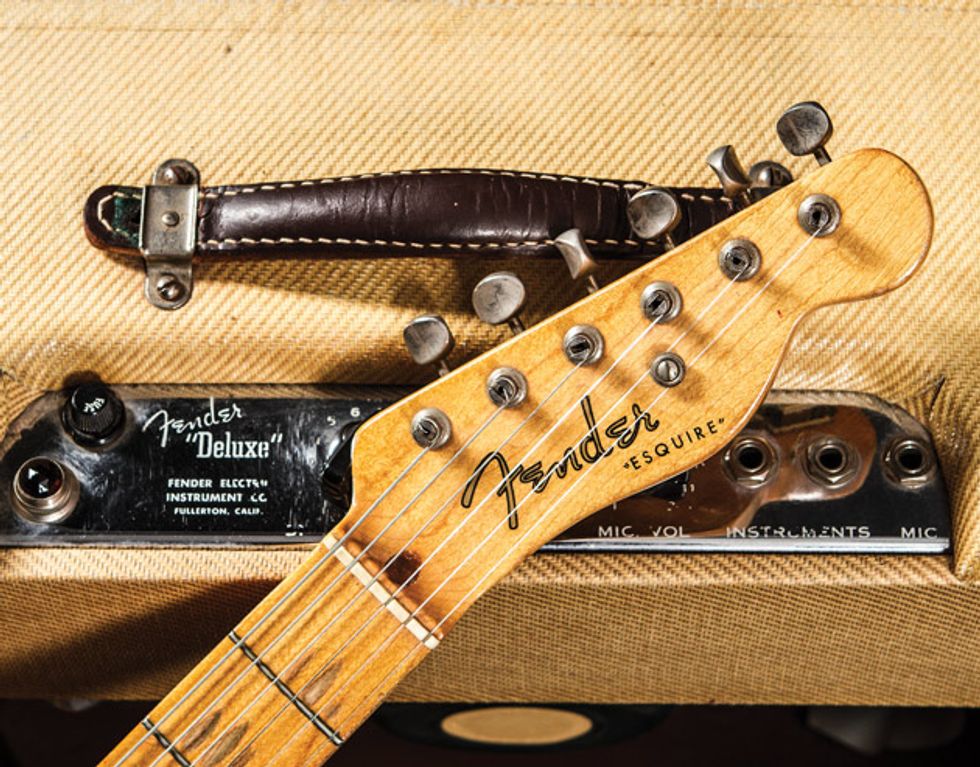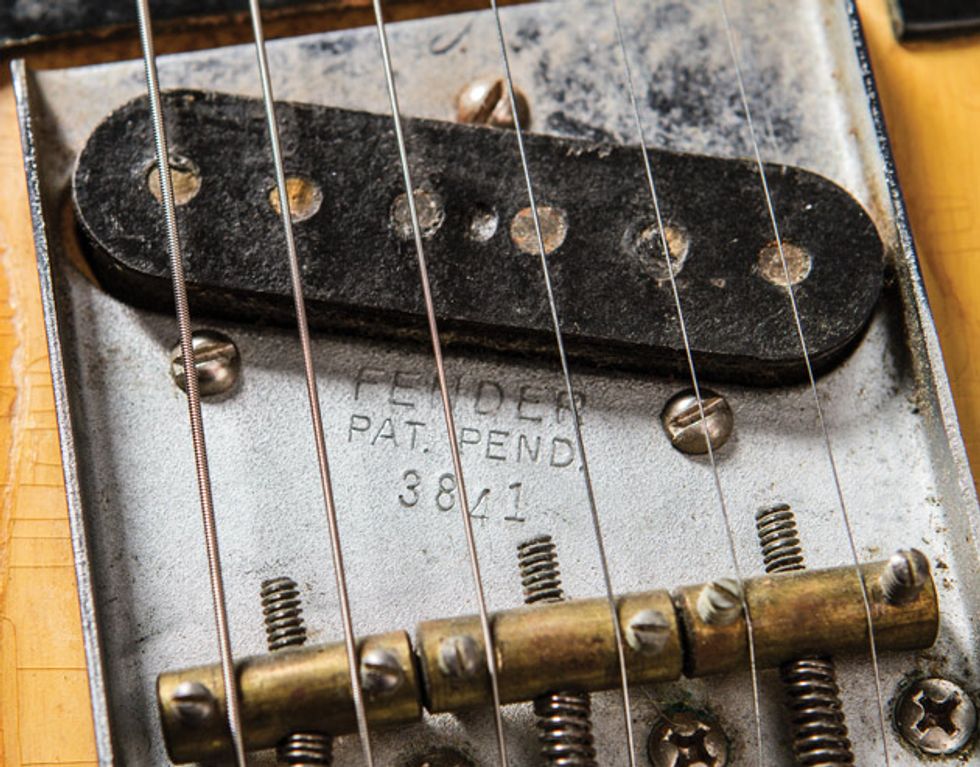The Fender Esquire was officially unveiled in April 1950 as Fender’s first standard electric solidbody. The 1950 spring catalog advertised the guitar as having one pickup in the bridge position, but some early two-pickup versions do exist. All bodies were routed for two pickups, giving the option of adding a neck pickup. Fender’s two-pickup version of the guitar eventually became known as the Telecaster, with the Esquire remaining a lower-priced alternative.
This classic-cut vintage headstock has a round string tree and tuners made by Kluson sans the company’s name. In 1956 the Esquire string tree became a rectangle, and a year later Kluson was stamping its name on tuners.
While the Esquire that appeared in Fender’s 1950 catalog was black with a pinewood body, a see-through blonde finish on an ash body soon became standard. In the early ’50s, the Esquire and Telecaster shared the same catalog description: “Sensational modern styling, especially designed neck with built-in adjustable tension rod to correct for warpage due to string tension, cutaway body makes possible full chord combinations up to the end of the fretboard, new micro adjustable bridge makes possible string adjustments both for action (or fretting) and length, pickups are fully adjustable for desired balance of bass and treble, 3-way tone switch for lead or to take off tone, full concert tone and short duration rhythm tone, compact size for easy playing and portability, professional players say these guitars have faster, easier action than any other guitar they have ever played.”
a lower-priced alternative.
The 1952 Esquire pictured has "TG-7-9-52" penciled on the end of the neck, indicating employee Tadeo Gomez completed it in July 1952. The date penciled in the neck pocket area of the body is "6-12-52." The guitar has the classic characteristics of a 1952 Esquire including a transparent butterscotch blonde finish over an ash body, a single-ply black Phenolite (also known as Bakelite) pickguard, one bridge pickup with level pole pieces (which were staggered on later models, starting in 1955), a 3-way switch with full pickup control but no tone control in the first position, tone control engaged in the middle position, and a preset rolled-off tone in the third position. The 1-piece maple neck has narrow-spaced position markers at the 12th fret. They were made wide on Esquires between 1953 and 1963. There is also a round string tree (made rectangular in 1956) and Kluson “no brand” tuners. These tuners were stamped with “Kluson Deluxe” in a single line by 1957. The 1952 list price for this guitar was $149.50 plus $39.95 for the case. The current value of an Esquire of that year in excellent, all-original condition is $35,000.
Zooming in, we see Fender’s vintage compensated bridge saddles and a patina on the magnetic pole pieces of the single-coil pickup that adds to this instrument’s character.
The amp pictured behind the guitar is a 1949 Fender Deluxe. The Deluxe debuted in 1946 with a wooden cabinet holding a 10-inch speaker. By 1948 it was upgraded to a tweed-covered TV-front cabinet equipped with a Jensen P12R 12-inch speaker. The amp is powered by two 6V6GT tubes capable of producing about 10 to 14 watts. The original price was $99.50. The current value for the amp is $3,000.
Sources for this article include The Blackguard: A Detailed History of the Early Fender Telecaster Years 1950–1954 by Nacho Baños, The Fender Telecaster: The Detailed Story of America’s Senior Solid Body Electric Guitar by A.R. Duchossoir, Fender Amps: The First Fifty Years by John Teagle and John Sprung, and The Soul of Tone: Celebrating 60 Years of Fender Amps by Tom Wheeler.









![Rig Rundown: Russian Circles’ Mike Sullivan [2025]](https://www.premierguitar.com/media-library/youtube.jpg?id=62303631&width=1245&height=700&quality=70&coordinates=0%2C0%2C0%2C0)


























